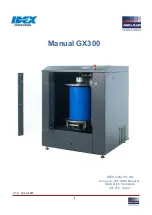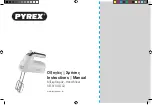
F-1
O w n e r ’ s M a n u a l
Optional I/O Cards
Appendix F
Installation and Connection of
Optional I/O Cards
There are several optional cards available
for the Digital 8•Bus which you can install into
the card cage in the rear panel of the console.
These cards provide additional inputs and
outputs for specific applications, or additional
digital signal processing power for effects.
AIO•8
This card provides 8 analog line-level inputs
and 8 analog line-level outputs. Connections are
made through two 25-pin D-Sub connectors. You
can install this card in any of the Tape In/Out
slots, or in the ALT I/O slot.
Connections for AIO•8
Refer to Figure F-1 for the pin-out diagram
of the 25-pin connectors.
DIO•8
This card provides 8 digital inputs and 8
digital outputs. Connections are provided in
both ADAT Multichannel Optical Interface and
Tascam T/DIF-1 formats. You can install this
card in any of the Tape In/Out slots, or in the
ALT I/O slot. You can mix any combination of
the AIO•8 and DIO•8 cards in the Tape I/O
slots to suit your particular application.
You can configure the card in software and
select which I/O connector you want to use.
Refer to the section “Configuring Digital I/O” in
Chapter 3 for more information.
Connections for ADAT
The connection for ADAT is made with a
fiber optic cable, sometimes referred to as a
“lightpipe.” This connector provides 8 channels
of bidirectional digital audio. You can purchase
this cable from your Alesis dealer.
Connections for DA-88
The connection for T/DIF-1 is made with a
25-pin D-Sub connector. This connector
provides 8 channels of bidirectional digital
audio. This connection requires a proprietary
cable made by Tascam (Part Number PW-88D).
AES/EBU Card
This card provides 8 digital inputs and 8
digital outputs in the AES/EBU standard
format. Connection is made through a single
25-pin D-Sub connector. You can install this
card in any of the Tape In/Out slots, or in the
ALT I/O slot.
Connections for AES/EBU
AES/EBU is a standard two-channel digital
protocol used for long balanced cable
applications. Thus, each conductor actually
transmits two channels of digital audio data.
Refer to Figure F-2 on the next page for the
pin-out diagram of the 25-pin connector.
Pin 1
+
Ch 8
Ch16
Ch24
Pin 2
shield
Ch 8
Ch16
Ch24
Pin 3
–
Ch 7
Ch15
Ch23
Pin 4
+
Ch 6
Ch14
Ch22
Pin 5
shield
Ch 6
Ch14
Ch22
Pin 6
–
Ch 5
Ch13
Ch21
Pin 7
+
Ch 4
Ch12
Ch20
Pin 8
shield
Ch 4
Ch12
Ch20
Pin 9
–
Ch 3
Ch11
Ch19
Pin 10
+
Ch 2
Ch10
Ch18
Pin 11
shield
Ch 2
Ch10
Ch18
Pin 12
–
Ch 1
Ch 9
Ch17
Pin 13
N/C
Signal
Description
Tape 1-8,
Bus 1-8,
and ALT I/O
Tape 1-8
Bus 1-8,
and ALT I/O
Tape 9-16
Tape 17-24
Pin 14
–
Ch 8
Ch16
Ch24
Pin 15
+
Ch 7
Ch15
Ch23
Pin 16
shield
Ch 7
Ch15
Ch23
Pin 17
–
Ch 6
Ch14
Ch22
Pin 18
+
Ch 5
Ch13
Ch21
Pin 19
shield
Ch 5
Ch13
Ch21
Pin 20
–
Ch 4
Ch12
Ch20
Pin 21
+
Ch 3
Ch11
Ch19
Pin 22
shield
Ch 3
Ch11
Ch19
Pin 23
–
Ch 2
Ch10
Ch18
Pin 24
+
Ch 1
Ch 9
Ch17
Pin 25
shield
Ch 1
Ch 9
Ch17
Signal
Description
Tape 9-16
Tape 17-24
Figure F-1. DB-25 Pin-out Identification
Summary of Contents for 8-BUS Series
Page 49: ...3 16 D i g i t a l 8 B u s Start Up ...
Page 57: ...4 8 D i g i t a l 8 B u s Connections ...
Page 77: ...5 20 D i g i t a l 8 B u s Preparing for a Session ...
Page 177: ...7 20 D i g i t a l 8 B u s Automation ...
Page 207: ...D 2 D i g i t a l 8 B u s Apogee UV22 ...
Page 219: ...F 4 D i g i t a l 8 B u s Optional I O Cards ...
Page 227: ...H 2 D i g i t a l 8 B u s Upgrading ...
Page 235: ...K 2 D i g i t a l 8 B u s ...
Page 237: ...D i g i t a l 8 B u s ...
Page 239: ...D i g i t a l 8 B u s ...
















































